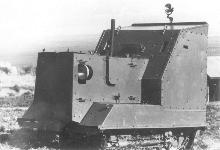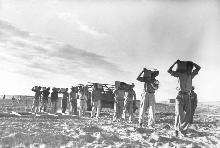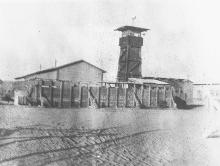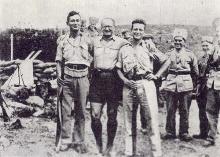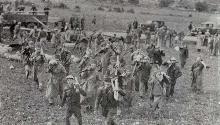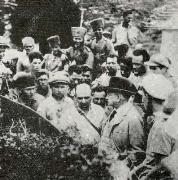| Hagana & the Yishuv |
The relationship between the Hagana and the Yishuv developed over the years in 3 separate directions: a. The foundation of the Hagana was a result of the need to protect Jewish settlements. b. Organization members enlisted from the various settlements and were referred to units according to geographic settlement deployment. c. The Hagana participated fully in the founding of settlements, planning and defense. The Hagana first operated locally in order to defend individual settlements or a group of settlements. Yishuv institutions acknowledged the need for a Jewish self defense organization, to avoid dependence on the British government for defense. The Hagana's existence depended on volunteers from the Yishuv. The populations of established settlements (cities & towns) were enlisted individually. Members of the collective agricultural labor settlements (Kibbutzim & Moshavei Ovdim) were enlisted collectively. The entire population of the Yishuv was held responsible for its own defense. In the event of an attack, residents had to defend the settlement until Hagana or British army reinforcement arrived. From 1930 onwards the organization became more involved in settlement defense planning and defense plan improvements, such as building safe houses, guard posts and organizing solitary settlements into branches for the purpose of mutual support, in order to increase holdings of the Jewish settlement over the different areas, thus influencing the division of the country between Jews and Arabs. The Hagana became more involved in formulating new settlement plans. Stockade and Watchtower - method of building new agricultural settlements in the 1930's, during the Arab Uprising in Palestine. This project is a prominent example of the Hagana's involvement in settlement planning. 50 settlements were established based on this method from April 1936 to the end of 1939. The Hagana was involved in the planning of settlement locations, their foundation and defense. The method enabled the instant placement of a fortified settlement capable of defending it self against Arab attacks. The largest and most complex operation was the foundation of Hanita in the Western Galilee (1938). As in all other army operations, there was extensive enlistment of Hagana members and resources. During the 1940's, Palmach members were attached to and under the command of the Hagana. As opposed to Hagana members in other settlements and cities, who carried out their defense duties while continuing their civilian life, Palmach units established settlements in areas of political and military importance, and remained in the settlements until they were settled by civilians. The Hagana continued its settlement operations during the struggle against the British (1945-1947) with the establishment of 11 new settlements in the Negev on the eve of Yom Kippur (6.10.1946). The consequences of the continuing collaboration between the Hagana and the settlements became evident during the War of Independence. Settlements in the front line became defense outposts and the settlers were reinforced with combat units, thus establishing a combined defense line against the Arab attackers from within, and the threat of invasion from surrounding Arab countries. | |||||||||||

